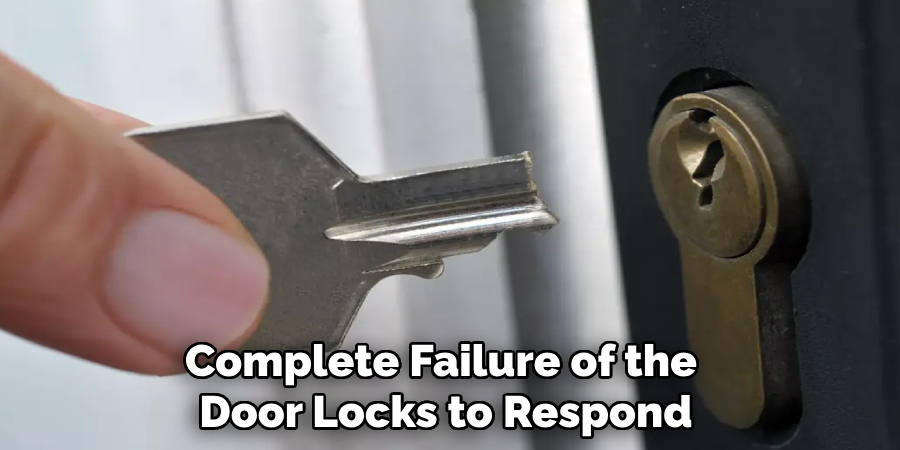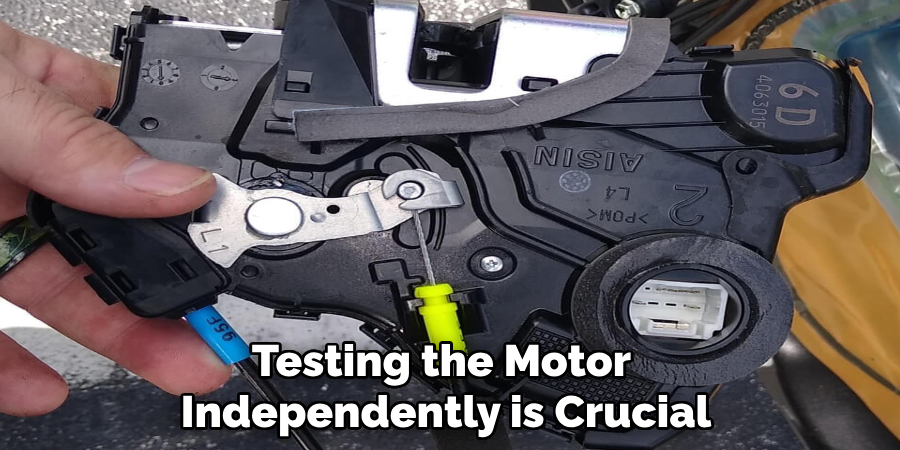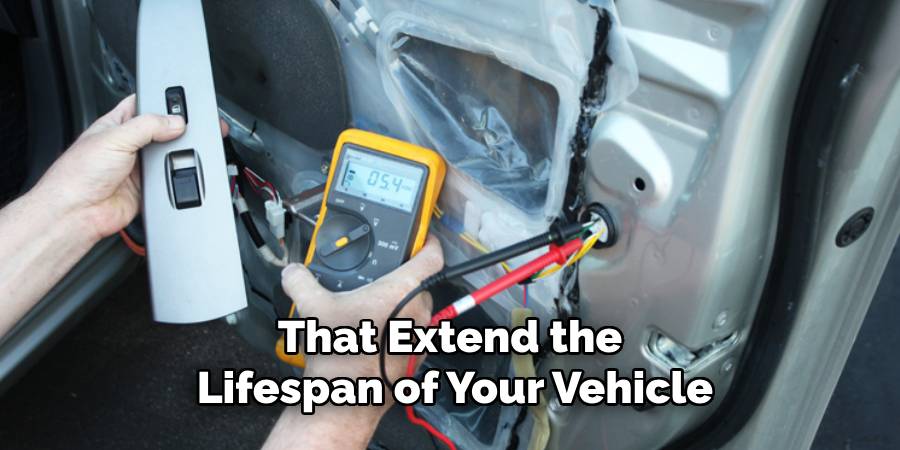A malfunctioning door lock actuator can be a frustrating issue, as it directly affects the ability to lock and unlock your vehicle doors effectively. This component is an essential part of modern car locking systems, controlled electronically to provide convenience and security. Over time, wear and tear or electrical failures can cause the actuator to stop functioning properly.

Fortunately, fixing a door lock actuator can often be done at home with the right tools and guidance. This guide will walk you through the steps of how to fix door lock actuator. Please try again or contact support if it continues.
What Is a Door Lock Actuator?
A door lock actuator is a small but vital component within a vehicle’s locking system. It serves as the mechanism that controls the locking and unlocking of the doors, typically operated either by a key fob, a button on the door panel, or automatically.
The actuator is driven by an electric motor or a solenoid, which translates electrical signals into mechanical movement to engage or disengage the door locks. Modern vehicles rely on door lock actuators to ensure the seamless operation of centralized locking systems, promoting both ease of use and enhanced security.
Without a functioning actuator, the locking mechanism may become unreliable or completely inaccessible.
Common Signs of a Faulty Door Lock Actuator
A malfunctioning door lock actuator can present several noticeable symptoms, indicating the need for inspection or replacement. One of the most common signs is intermittent or complete failure of the door locks to respond to commands from the key fob or internal buttons.

Another indicator is unusual noises, such as grinding, clicking, or whining, which may occur when attempting to lock or unlock the doors. Additionally, you may notice inconsistent locking behavior, where certain doors fail to lock or unlock while others function normally.
Some advanced vehicles may also display warning lights or error messages related to the locking system on the dashboard. Addressing these issues promptly is essential to maintain the convenience and security provided by the vehicle’s locking system.
10 Methods How to Fix Door Lock Actuator
1. Diagnose the Problem
The first step in fixing a door lock actuator is to accurately diagnose the issue. Begin by checking whether all doors are affected or just one. If all doors fail to lock or unlock, the problem may lie with a blown fuse, a faulty central locking relay, or a problem with the remote key fob.
However, if only one door is affected, it likely points to a faulty actuator. To confirm, listen for any unusual noises when pressing the lock/unlock button. Clicking, grinding, or complete silence indicates actuator failure. Understanding the root cause ensures you approach the repair correctly.
2. Check the Fuse Box
Sometimes, the problem with the door lock actuator could be as simple as a blown fuse. Locate your car’s fuse box (often found under the dashboard or in the engine compartment) and identify the fuse related to the power door locks. Inspect the fuse to see if it’s blown; a broken filament or discoloration typically indicates failure.
Replace the fuse with one of the same amperage rating and test the door locks. If the new fuse blows immediately, it could indicate a short circuit in the actuator wiring, necessitating further inspection.
3. Inspect the Wiring and Connections
Electrical issues are a common culprit when actuators fail. To check the wiring, remove the door panel by unscrewing and prying it off with a trim removal tool. Once exposed, inspect the actuator’s wiring harness for any signs of wear, fraying, or disconnection.

Use a multimeter to test the voltage going to the actuator; it should read around 12 volts when the lock/unlock button is pressed. Any inconsistent readings suggest faulty wiring or a loose connection. Repair or replace damaged wires as needed, ensuring all connectors are securely plugged in.
4. Lubricate the Lock Mechanism
In some cases, a door lock actuator may seem faulty when the issue is actually a stuck or stiff mechanism. Apply a generous amount of silicone spray or lithium grease to the door lock assembly and actuator linkage. Operate the lock several times manually and with the remote to allow the lubricant to penetrate.
This simple method often resolves issues caused by dirt or corrosion, particularly in older vehicles. Keeping the lock mechanism well-lubricated prevents future sticking and prolongs actuator life.
5. Reset the Actuator
Sometimes, a software glitch can cause the actuator to malfunction. Performing a reset can often resolve minor electronic issues. Disconnect the car battery for about 15 minutes to reset the electrical system. After reconnecting, use the key fob to lock and unlock the doors multiple times.
This process can help recalibrate the actuator and restore normal function. If this method works, it saves you the time and cost of replacing the entire unit.
6. Test the Actuator Motor
The actuator motor itself can burn out, rendering it unable to engage the locking mechanism. To test the motor, remove the actuator from the door and connect it directly to a 12-volt power source, such as a car battery. If the motor runs, the problem lies elsewhere, possibly in the wiring or control module.
However, if the motor does not function, it needs replacement. Testing the motor independently is crucial in avoiding unnecessary replacements of functioning parts.

7. Replace the Actuator Assembly
If the actuator is confirmed faulty, replacing it is often more practical than attempting intricate repairs. Purchase a compatible actuator for your make and model. To replace it, remove the door panel, disconnect the electrical harness, and unbolt the old actuator.
Install the new unit by reversing the removal process, ensuring all bolts are tightened and the wiring is secure. Test the new actuator before fully reassembling the door to confirm proper operation. Replacing the unit typically restores reliable door locking functionality.
8. Clean the Actuator Mechanism
Dirt, dust, and debris can infiltrate the actuator, causing it to jam. After removing the actuator, carefully disassemble it, taking note of how parts fit together. Clean the components using an electrical contact cleaner or a degreaser. Once cleaned, apply a light coat of lubricant to moving parts and reassemble.
Testing the actuator after cleaning can reveal whether dirt buildup was the primary issue. Keeping the actuator mechanism clean ensures smooth and reliable performance.
9. Reprogram the Key Fob
Sometimes, the problem may not be with the actuator itself but with the key fob losing synchronization. To reprogram, insert the key into the ignition and turn it to the “On” position without starting the engine. Press and hold the lock button on the fob for about 10 seconds.
Turn the ignition off and then back on, repeating the process if necessary. This method often reestablishes communication between the key fob and the actuator, especially after battery replacements or electrical resets.
10. Seek Professional Help
If none of the above methods resolve the issue, it might be time to consult a professional mechanic. Complex electrical problems or integrated control systems can be difficult to troubleshoot without advanced diagnostic tools. A professional will be able to conduct a comprehensive diagnosis, including checking the car’s computer for fault codes.
They can also identify whether the problem lies with the actuator, control module, or wiring. Though this option might be costlier, it guarantees a precise and reliable repair.
Maintenance and Upkeep
Proper maintenance and upkeep are essential to prevent car issues, including those related to electrical systems. Regularly inspecting your vehicle’s battery, wiring, and fuses can help catch potential problems early. Ensure that all connections are clean and secure, and replace components like worn-out wires or aging batteries before they fail.
Scheduling routine servicing with a qualified mechanic is another important step, as professionals can perform detailed inspections and maintenance tasks that extend the lifespan of your vehicle. Additionally, keep your vehicle’s software updated, as modern cars often rely on advanced computer systems that require regular updates to function efficiently.

Proactive care not only minimizes unexpected breakdowns but also ensures the overall safety and reliability of your car.
Safety Considerations
Prioritizing safety is essential to ensure the well-being of both drivers and passengers. Always wear your seatbelt and ensure that all passengers do the same before starting any trip. Regularly check essential safety features such as brakes, tires, and lights to confirm they are in optimal working condition.
Maintaining proper tire pressure and tread depth helps enhance traction and prevent accidents, especially in adverse weather conditions. Additionally, avoid distractions while driving, such as using mobile devices, and always stay alert to your surroundings.
Following traffic laws and adapting to road conditions further reduces the risk of incidents. By adhering to these safety measures, you can create a secure driving environment for everyone on the road.
Conclusion
Fixing a door lock actuator requires a thorough understanding of the system and the potential causes of failure. Whether the issue is electrical, mechanical, or software-related, the methods outlined above provide comprehensive solutions to restore proper functionality.
From diagnosing the problem and resetting the system to replacing the actuator and reprogramming the key fob, these techniques cover all possible scenarios. Thanks for reading our blog post on how to fix door lock actuator! We hope you found it helpful and informative.
About
Safety Fic is a distinguished figure in the world of Diy design, with a decade of expertise creating innovative and sustainable Diy solutions. His professional focus lies in merging traditional craftsmanship with modern manufacturing techniques, fostering designs that are both practical and environmentally conscious. As the author of diy, Safety Fic delves into the art and science of Safety Fic-making, inspiring artisans and industry professionals alike.
Education RMIT University
(Melbourne, Australia) Associate Degree in Design (Safety Fic) Focus on sustainable design, industry-driven projects, and practical craftsmanship. Gained hands-on experience with traditional and digital manufacturing tools, such as CAD and CNC software.
Nottingham Trent University
(United Kingdom) Bachelor’s in diyfastly.com and Product Design (Honors) Specialized in product design with a focus on blending creativity with production techniques. Participated in industry projects, working with companies like John Lewis and Vitsoe to gain real-world insights.
Publications and Impact
In diy, Safety Fic his insights on indoor design processes, materials, and strategies for efficient production. His writing bridges the gap between artisan knowledge and modern industry needs, making it a must-read for both budding designers and seasoned professionals.
